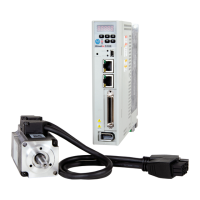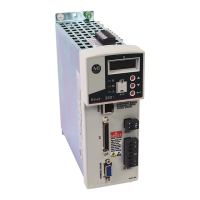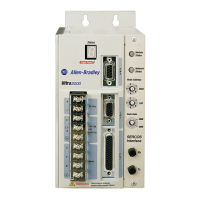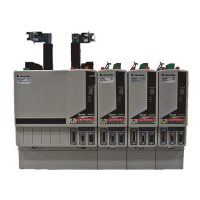Rockwell Automation Publication 2198-UM004A-EN-P - October 2019 59
Connector Data and Feature Descriptions Chapter 3
Configure the Brake Control Circuit
Follow these steps to configure brake control in KNX5100C software.
1. Click Digital IO/Jog Control in the Functional List.
2. Check Edit DIO configurations.
3. From the Digital Output (DO) pull-down menu, choose Brake Control.
4. Verify that N.O. (normally open) is selected.
5. Uncheck Edit DIO configurations.
6. Click Settings>General Setting and configure the brake response engage
and disengage delay times based on the motor selected.
Motor brake specifications for all Allen-Bradley motor families appear in
the Kinetix Rotary Motion Specifications Technical Data, publication
KNX-TD001
. Coil current and motor-brake response time specifications
are shown on page 62
for your convenience. If any discrepancies exist
between the technical data and this publication, KNX-TD001
takes
precedence.
Brake control is configurable in KNX5100C software. An active signal
releases the motor brake. Turn-on and turn-off delays are specified by
ID149 (P1.042) Disengage Delay Time and ID150 (P1.043) Engage
Delay Time parameter settings.
IMPORTANT Holding brakes that are available on Allen-Bradley rotary motors
are designed to hold a motor shaft at 0 rpm for up to the rated
brake-holding torque, not to stop the rotation of the motor shaft,
or be used as a safety device.
You must command the servo drive to 0 rpm and engage the brake
only after verifying that the motor shaft is at 0 rpm.

